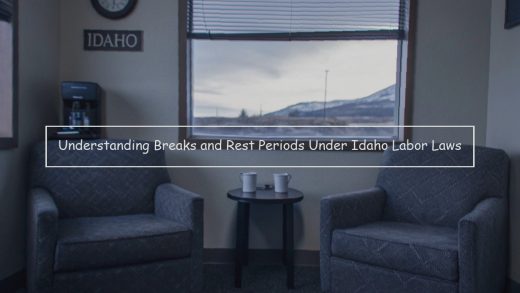Single Case Agreement: What You Need to Know
The Single Case Agreement (SCA) is a provision that allows healthcare providers to serve Medicaid beneficiaries outside of the insurer’s network. While the SCA is not a guarantee that a provider will be paid in all circumstances, it does have benefits for both healthcare providers and Medicaid beneficiaries.
A SCA is a mechanism by which a healthcare provider can be authorized to see patients who are part of a network when that provider is not. In order for a provider to be paid for providing services to Medicaid recipients, he or she typically must be in the insurer’s network, according to the insurer’s published fee schedule. However, the SCA provides for some flexibility in this regard.
First, the SCA allows providers who are not in the insurer’s network to receive reimbursement directly from the insurer for the services provided to their patients. Usually if a provider is not in the network, the patient either has to pay the provider directly and seek out-of-network reimbursement from the insurer, or the provider must bill the provider for services and wait to see if the payer will eventually pay. In doing so, the provider takes on additional work, and potentially additional costs, to receive reimbursement. Conversely, if the insurer agrees to a SCA, it is promising to pay the provider directly.
Second , the SCA allows for a higher level of reimbursement to the provider. The 2018-19 Medicaid fee schedule is set at $75.66. However, under a SCA, the provider may be reimbursed at their own fee schedule, which may be higher. If the provider does not sign the SCA, they are subject to the published Medicaid fee schedule. For example, if the provider is being reimbursed at a rate of $100, but the Medicaid rate is $80, they will be paid $80 if they are not in the network. If the provider is in the network, they will be paid $75.66 for the services, unless there is high volume. However, if the provider agrees to the SCA, the insurer will agree to reimburse the provider at the higher rate of $100.
The SCA provides a significant advantage to not only the provider, but to the Medicaid recipient as well. The SCA provides a high level of predictability. When a patient has been granted an SCA, he or she can rest assured that 100% of the bill will be reimbursed, rather than having to foot any significant portions of an out-of-network provider’s additional fees. For a provider who is not in the network, this provides peace of mind that the services will not be unpaid. The provider does not have to worry that if they provide the services, it will not be reimbursed and they will be left with the bill.

The Mechanics of Single Case Agreements
In essence, when the Medicaid program being used by a Medicaid beneficiary denies the provider(s) access to their referral or access to serve that Medicaid beneficiary in their program, the SCA can be used to gain the authorizations the provider needs to serve the Medicaid beneficiary. As a general proposition, where a particular program is not accessible to a provider under Medicaid statute, the SCA is the tool that allows both parties to access the program if allowed. For example, I on occasion represent Medicaid beneficiaries who are trying to access chiropractic services. The issue is that the chiropractic services are not available in the Medicaid program where the beneficiary resides. Hence, the SCA is used, and the amount to be paid and duration of payments. Typically, the SCA will set forth a notice period to allow the SCA to be cancelled by the Medicaid program without cause upon short notice. The SCA avoids the need to go through the usual "in-network" process and is relatively easy to obtain. The process is simple. The patient can ask the provider whether a SCA can be obtained. If so, the provider must then send a request for the authorization to the appropriate state Medicaid agency. The request should include the following: (1) the name and TIN (if appropriate) of the provider; (2) the name of the impacted Medicaid beneficiaries; (3) the month of service for which reimbursement is sought; (4) a description of the services covered by the provider’s license; and (5) the specific provider type the provider is enrolled under the State’s Medicaid program (e.g., a chiropractor may be a Managed Care Organization contracted provider, a fee-for-service provider, or both). Concurrently with the request for the SCA, the provider must issue a claim for that month of service for that provider type. That claim should contain the following information: (1) the name and TIN numbers of the provider; (2) the names of the impacted Medicaid beneficiaries and their dates of birth; (3) a brief billing narrative or procedure codes that specify the services provided; (4) the month of service for which reimbursement is sought; (5) the specific type of provider the provider is enrolled under the State’s Medicaid program; and (6) the NPI number of the provider. If the Medicaid agency does not respond, the SCA request is considered granted. However, to make a timely filing compliant, it’s important first to obtain a SCA from the state Medicaid administrator to avoid a later evaluation.
Single Case Agreements: When and Why They Are Used
When Covered Services are not Available at an In-Network Provider
Single case agreements are most commonly considered when an enrollee requires a specific service that is not available through an in-network provider. For example, an enrollee may require a specialty treatment or procedure that is not otherwise available through in-network providers.
Out of State Coverage
There are specific circumstances where placement in an in-state provider may not be appropriate. Examples include when the enrollee is located out of state or is temporarily located out of state. In these situations, a SCA may be considered for services provided out of state or out of network.
Non-Covered Services
Another scenario where a SCA will be required is when the service being sought is NOT a covered service by a plan. A SCA should also be considered when an enrollee is in a crisis but needs services that are not reasonably obtainable through network providers.
Pros and Cons of Single Case Agreements
The use of SCA’s provides both benefits and challenges for patients and providers. SCA’s can be beneficial for patients who are unable to obtain services from local providers due to lack of expertise or who have service needs that differ from those providers with whom the patient is included in an existing agreement. This can arise when a patient seeks a service change during their treatment, when the covered service is no longer provided by the patient’s provider network ("out of network"), or when the patient having wait times that exceed his/her tolerance for travel to a specific provider or facility. Furthermore, SCA’s provide access in a timely and effective manner when there is a particular situation which the "in-network" provider is incapable of addressing. The SCA process also eliminates the need for "out of network providers" to go through the lengthy credentialing process for one specific patient when the need arises.
For providers, SCA’s do, at least, provide a limited reimbursement mechanism without dealing with prior authorization by obtaining services for which providers could not otherwise be reimbursed. By creating an SCA, the private plan agrees to pay for services on a case-by-case basis, even though it deems the services to be a non-covered benefit.
One potential problem with SCA’s is that the time period for which they are authorized is often not long enough. Provider may perform a short series of services, but at the end of that period, face a lengthy and burdensome process to obtain renewal of the agreement. Alternatively, the plan will agree to payment for an initial service, such as a consultation, but deny payment for follow-up visits or related procedures. In other instances, when there is a clinical need for a provider to decide whether to perform the proposed surgery before proceeding with it or trained specialties are required to evaluate the patient in advance of surgery, such as cardiologists, or vascular surgeons, the SCA process is often midsummer’s night dream: the requirements for an SCA do not seem to suggest that an agreement will be granted in the absence of a signed statement from the patient’s in-network provider stating that he or she has had an opportunity to meet with the out of network specialist to evaluate the condition and plan for the procedure. The physician providing the consultation cannot confirm a diagnosis in the absence of a physical examination, so this can be a "catch 22".
For some plans, such as BCBS, authorization for an SCA depends upon the provider’s participation in the plan’s network. Any physician who treats TPO without being in the network for that plan will not be paid for those services. For many providers who are accustomed to working case by case basis, this is a challenge. However for those providers who are in network for at least one other plan, this can be another challenge because the provider network name can be an impediment to an out of network provider who participates in other plans, but not all the plans in the network. This could lead to some unexpected denials.
Thus the SCA process, while potentially beneficial does present some challenges to patients and providers.
How to Secure a Single Case Agreement
Should a facility wish to pursue a SCA, steps must be taken to request a SCA.
- The participant should first request to visit with the facility. This should occur in writing. In that request, it should be made perfectly clear that the reason for the visit is to determine whether or not their Medicaid needs can be met at the facility.
- The facility should next reach out to the appropriate person at the Medicaid Managed Care Organization to which the participant is currently enrolled to determine whether or not a SCA is obtainable. This should be done in writing and should include a brief summary of the history of the participant’s case. If this request must be sent to a "subcontractor" of the MCO for processing, the facility should try to determine the appropriate person to send the request to from the MCO. It is essential to determine who the person is to expedite processing of the SCA as soon as possible.
- The facility should provide any additional information required by the MCO .
- The facility should respond to any questions posed by the MCO regarding the case when making their request. Obviously, if a certain item of medical equipment is not covered under New York Medicaid, the facility should not expect the MCO to agree to pay for its use until such time as the Medicaid program includes that item. It is also important to be aware that just because a certain medication is not approved for administration when the patient initially seeks placement, that does not mean that this medication will continue to be excluded through the course of an admission.
- The facility must subsequently follow up with the MCO to obtain the final decision regarding the SCA. In the event that the MCO denies the SCA, the facility may be able to follow up with the Medicaid office to determine whether there are circumstances that would allow for a reconsideration of this decision. They should also pay careful attention to any deadlines for appeal that may be present.
Legal Implications of Single Case Agreements
The legal considerations when forming a single case agreement are quite complicated. The most important legal consideration on Medicaid’s part when forming an SCA is that it must be in compliance with Medicaid regulations. This means that sufficient notice that an SCA will not be signed with a provider must be given to the provider. Medicaid regulations in Ohio require a provider to be notified that the provider is not part of the Medicaid program at least thirty (30) days prior to the provider being excluded from the Medicaid program and therefore no longer covered under the program. See OAC 5122-3-10 (D). Ohio Medicaid generally follows CMS’ Federal Notice Period rules for services that are delivered directly to the patient. See 42 CFR 455.23. These rules mandate that providers that are being compelled to return any overpayment must be given at least thirty (30) days’ prior notice so that they have an opportunity to remedy the situation. Ohio has not vacated this notice requirement.
Medicaid must also consider whether the SCA is interstate or intrastate. Interstate agreements are more likely to run afoul of the Commerce Clause and Dormant Commerce Clause because they involve more than just the behavior of Ohio’s economy; the provider may reside in another state. Additionally, the Medicaid agency must analyze whether the SCA will be viewed as a market allocation agreement if the provider is in a different county in Ohio or is outside the state. The Ohio Attorney General has opined that SCAs do not violate anti-trust laws as long as there is a bona fide physician shortage. In the past, SCAs have been used to control the entry of certain providers, such as chiropractors, into the Medicaid program to decrease program costs. Throughout the past few years, the Office of the Inspector General (OIG) has issued multiple reports finding that SCAs can increase Medicaid costs by restricting the number of providers that can treat patients in a specific area.
Providers can also run afoul of the law if they enter into SCAs or other referral arrangements that then requires the providers to make direct payments to the other party to the agreement. Providers should ensure that they understand the Stark Law and Anti-Kickback and Anti-Referral Statutes as these can expose the providers to monetary penalties and lawsuits if a provider makes a financial payment to another provider after entering into an SCA. A simple agreement cannot remedy this situation as the Anti-Kickback Statute has a specific "Reasonable Referral" exception only for those inter-provider agreements that are not required by Federal law. There is a similar exception to the Stark Law that does not apply to a SCA as SCAs require mutual agreement between the parties who will share payments from Medicaid. Therefore, providers should ensure whenever they enter into a SCA, they not only execute the SCA, but all other contracts that are necessary to carry out the SCA, including all payment schedules, etc.
Single Case Agreements in Action: Case Studies and Practical Examples
To illustrate the power and potential of single case agreements (SCAs), we turn to two illustrative examples from different sides of the Medicaid payment process.
Example 1: Approved Device for Medical Condition
A child’s primary pediatrician prescribes a medical device for a specific medical condition. But the state Medicaid program requires a prior authorization prior to payment and coverage. The prior authorization is denied. Even though the device is clinically appropriate, the parameters of the coverage criteria do not match the diagnosis for which the primary pediatrician is prescribing the device. The child’s mother calls her local state legislator, who calls the state Medicaid program. The legislation turns out to be effective and the state Medicaid program agrees to review this specific case for payment. It ultimately approves the device for reimbursement.
Example 2: New and Emerging Technologies
A teenager has Epilepsy and is currently on three anti-seizure medications. He is experiencing multiple breakthrough seizures a week, some causing injury, and he is being referred for evaluation for a brain surgery. The mother contacts her local state legislator, who in turn contacts the local state Medicaid program. The legislator explains that there is a new device in trials at a university medical center that may be appropriate for his seizures. The legislator asks if the young man can receive the device while it is being evaluated. A single case agreement is put in place to allow the device to be available for coverage in order to collect the necessary data to know how well it works.
The Future of Single Case Agreements
The future of SCAs in Medicaid rests heavily on the continued evolution in Medicaid provider reimbursement, procurement and payment methodologies, the expansion of Medicaid services to encompass new products, technologies or services, and continuing changes in the healthcare delivery system, including the delivery of care, the transformation of the medical practice and challenges in recruitment and retention of specialists. Anticipated changes in healthcare policy with the future is replete with uncertainty as we approach the November Presidential Election and subsequent change in the Partnership Plan expiration in April 2020 may portend an increased role in SCAs. On one hand, the implementation of the American Health Care Act may result in repeal of the Affordable Care Act and a return to pre-2012 Medicaid fee-for-service pricing and a possible return to payments based on customary rates prevailing in the area. On a second front, ACA payment model changes that include value-based and public reporting will continue to pose challenges for health plans in the pricing and securing unintended risks through managed care purchasers or providers shouldered with the "site of care." Because risk is no longer uniformly "carved-out" or managed by the plan, as we have with drug utilization, specialty pharmacy and other episodic care models, SCAs may prove to be more flexible and responsive in efforts to control drug or treatment costs. By allowing for case-by-case or client-by-client decisions, SCAs allow for negotiated entity or individual pricing at the complexity or acuity level that can be delivered by specialty pharmacies, specialty providers and drug manufacturers with competitive pressures for growth. Technology and telehealth may continue to grow beyond just the application of remote devices or delivery of remote diagnostic and treatment capabilities (e.g, . e-prescribing or secure pharmacy-by-facsimile prescription transmission) to the creation of remote monitoring or delivery systems for health care services, providing both redundancies in patient care and reduced risks of disruption for patients who move outside of their insurance carrier’s service area and/or may be under multiple payor systems. With additional support from CMS in support of telehealth and telemedicine, along with FDA regulation of health software, it is likely that the number of specialty clinics will continue to grow. SCAs will allow for integration of specialty services across multiple states or partner involvement that share common payor or regulatory characteristics. Should further consolidation of urban markets occur, or consolidation within health systems and provider groups expand, such concentrations may reduce the number of practitioners available to the health plans (or vice versa) and create challenges in recruiting or retaining specialists. SCAs will continue to address these issues when compliance with network participation becomes more difficult due to limited availability, or when a specialist or practice group chooses to discontinue participation in rate setting networks. Further, SCAs may serve as a tool for integrating population health data and analytics through the continued evolution of electronic health records and interoperability promoting the sharing of clinical and pharmacy information across state procurement, service area, departmental or health plan borders that promote the use information technology to improve healthcare delivery and outcomes and make Medicare and Medicaid services more effective and efficient. SCAs may become a mechanism for the aggregation of clinical and pharmacy data across state lines, perhaps particularly with respect to investigational drugs and treatments that crossover states, or across health insurance lines when members travel, move or work in another state.



